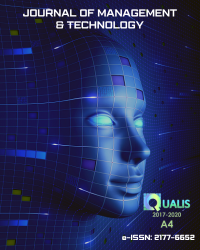Functional planning in transport interchange hubs: modernization of railway station architecture
DOI:
https://doi.org/10.20397/2177-6652/2024.v24iSpecial.2802Palavras-chave:
station, multifunctional complex; transport interchange; steel reinforced concrete slab; bridge building; platform building; load-bearing floor; multi-lattice truss.Resumo
The purpose of the study is to explore new architectural and structural solutions that allow to modernize the existing railway stations and effectively transform them into multifunctional transport hubs. The study examines new approaches to the positioning of station buildings in cities and their equipment with infrastructure with mandatory inclusion of by-the-hour hotels. New constructive solutions providing planning, architectural, and compositional possibilities for station building design for architects are proposed. A special focus is placed on the transformation of railway stations into transport interchange hubs, which in turn can function as multifunctional complexes with a variety of functional content of the object and incorporation into their volume a transport artery to connect nearby residential areas bypassing major highways. Conclusions are drawn about the possibility of incorporating railway stations into such multifunctional complexes. The paper gives examples of design solutions for bridge and platform buildings with incorporated railway stations, which show how the architecture of railway stations can be improved by turning them into multifunctional transport interchange hubs, especially by incorporating them into the volumes of bridge or platform buildings, which significantly save construction area in cities by occupying the second level above railway tracks.
Referências
Barinova, T. A. (2017). Printsipy vtorichnogo ispolzovaniia gorodskikh territorii s pomoshchiu zdanii-platform [Principles of reuse of urban areas by means of platform buildings] [Master's degree dissertation: 07.04.01 Architecture]. Moscow, 73 p.
Gelfond, A. L. (2006). Arkhitekturnoe proektirovanie obshchestvennykh zdanii i sooruzhenii [Architectural design of public buildings and structures]. Moscow: Arkhitektura-S, 277 p.
Kocheshkova, E. I., & Zabalueva, T. R. (2009). Issledovanie vozmozhnostei primeneniia novykh tipov zdanii, ispolzuiushchikh prostranstvo nad zaniatymi territoriiami v gorodskoi zastroike [Research of the possibilities of application of new types of buildings using the space above occupied territories in urban development]. Vestnik MGSU, 3, 66-70.
Ministry of Construction and Housing and Communal Services of the Russian Federation. (2020). SP 417.1325800.2020 Railway station complexes. Design rules. https://minstroyrf.gov.ru/upload/iblock/2ec/SP-417.pdf
Muratov, A. (2013). Sleepbox hotel “Tverskaya” na 1-i Tverskoi Iamskoi ul. v Moskve [Sleepbox hotel Tverskaya on 1st Tverskaya Yamskaya street in Moscow]. Project Russia. Magazine, 68, 130-137.
Vlasov, D. N. (2013a). Metodologiia razvitiia sistemy transportno-peresadochnykh uzlov na territorii gorodskogo iadra aglomeratsii (na primere Moskvy) [Methodology of development of a system of transport interchange transfer hubs in the core of an agglomeration (on the example of Moscow)]. Modern Problems of Science and Education, 4, 65-76.
Vlasov, D. N. (2013b). Nauchno-metodologicheskie osnovy razvitiia aglomeratsionnykh sistem transportno-peresadochnykh uzlov (na primere Moskovskoi aglomeratsii) [Scientific and methodological foundations for the development of agglomeration systems of transport interchange hubs (on the example of Moscow agglomeration)] [Abstract of a thesis for the degree of Doctor of Technical Sciences]. Moscow State Construction University, Moscow.
Vlasov, D. N. (2015). Printsipy zastroiki, orientirovannye na massovye vidy transporta, v planirovanii zarubezhnykh peresadochnykh uzlov [Principles of mass transport-oriented development in the planning of foreign interchange hubs]. Architecture and Construction of Russia, 8, 20-29.
Vlasov, D. N. Gorelova, V. A., & Shirokaia, N. V. (2014). Obshchestvennye aspekty gorodskikh proektov razvitiia transportnoi infrastruktury [Public aspects of city projects of transport infrastructure development]. Academia. Architecture and Construction, 3, 97-100.
Voronov, V. A., & Chistiakov, K. Iu. (2020). Transportno-peresadochnye uzly i intermodalnye kompleksy. Terminy i opredeleniia [Transport interchange hubs and intermodal complexes. Terms and definitions]. Architecture and Modern Information Technologies, 3(52), 252-264.
Zabalueva, T. R., Zakharov, A. V., & Demina, A. S. (2014a). Oteli pochasovogo prebyvaniia passazhirov v zdaniiakh-mostakh [Hotels of the hourly stay of passengers in bridge buildings]. Industrial and Civil Engineering, 9, 51-53.
Zabalueva, T. R., Zakharov, A. V., & Kocheshkova, E. I. (2010). Mnogoetazhnye bolsheproletnye zdaniia nad ekspluatiruemymi gorodskimi territoriiami [Large-span multi-storey buildings over exploited urban areas]. In Traditional scientific-technical conference of the faculty of the Institute of Construction and Architecture: Collected papers (pp. 94-103). Moscow: Moscow State University of Civil Engineering.
Zabalueva, T. R., Zakharov, A. V., & Kocheshkova, E. I. (2013). Zdaniia-mosty – Reshenie problemy avtomobilnykh probok v krupneishikh gorodakh [Bridge buildings – A solution to the problem of traffic jams in the largest cities]. Industrial and Civil Engineering, 9, 32-35.
Zabalueva, T. R., Zakharov, A. V., & Vakaliuk Iu. R. (2014b). Building-bridges (Russian Federation Patent No. 2513229). Federal Service for Intellectual Property.
Zakharov, A. V. (2020). Konstruktivnaia osnova sovremennykh NBZ i ikh ekonomicheskoe obosnovanie [Constructive basis of modern NBZ and their economic justification]. Innovations and Investments, 1, 251-256.
Downloads
Publicado
Como Citar
Edição
Seção
Licença
Copyright (c) 2024 Revista Gestão & Tecnologia

Este trabalho está licenciado sob uma licença Creative Commons Attribution-NonCommercial 4.0 International License.
Os direitos, inclusive os de tradução, são reservados. É permitido citar parte de artigos sem autorização prévia desde que seja identificada a fonte. A reprodução total de artigos é proibida. Em caso de dúvidas, consulte o Editor.


